Episode 1: Going Big with Carlo Traversi

Photo by Mary Mecklenburg Photography
Oh shit, it actually happened: Episode 1.
In this, our inaugural episode, we talk with pro climber Carlo Traversi, exploring the merits of being dynamic in your climbing. We take a close look at his approach to an impressive send of "Sky" (V14), which required rethinking an enormous move. Carlo came up with a solution that most of us never would have considered.
We also discuss his signature move, the "Pogo," and how to determine when you might be using your new skill TOO much.
Like what you hear? Subscribe to The Power Company Podcast on ITunes, Google Play, or Stitcher Radio, and leave a rating and review!
FULL EPISODE TRANSCRIPT:
Kris Hampton 00:01
What's up everybody? I'm your host, Kris Hampton. And welcome to Episode One of the Power Company Climbing Podcast brought to you by powercompanyclimbing.com. If you're not familiar with us, we build climbing training programs for specific types of climbers. We don't believe in a one size fits all approach to training and frankly, neither should you. So come check us out, you can also find us on Facebook, and you can find us on Instagram at powercompanyclimbing. And all those are different feeds different content. So make sure you check us out on all those platforms. Okay, I am on the road right now in Chattanooga, Tennessee, where I'm trying to get some bouldering done in between all the bursts of torrential rain that the southeast has been having, there's pretty much a flood watch every day. And somehow the boulders dry up in between those. So I'm not gonna complain, actually getting some work done here. Some of you may know that I had a shoulder surgery back in April to repair a fully torn labrum, fully torn rotator, partially torn and shredded bicep tendon. So it was a pretty major rebuild. And I had a great physical therapist, my friend Tammy, who's also a climber and I got cleared to climb in September. And maybe sport climbing would be the safe choice here. But that's not what I'm doing. Not psyched on sport climbing right now. So I'm trying to boulder. And even though I'm not full strength in the right arm, my right shoulder back to pretty consistent around the V7 level which is isn't too shabby for me being that I'm mostly an old weak guy, sport climber. But I'm learning. Trying to learn. Episode one. Shit, this thing got off the ground. I'm going to do a little celebration dance. You probably should too, because I can't promise there's going to be an episode two. Sure as hell gonna try. But no promises. All right. Our guest today for Episode One is Carlos Traversi, a climber from Santa Rosa, California, who most of you know as one of America's strongest boulders, one of the world's strongest boulders for that matter. But he also clips and bolts, he's climbed some ridiculously hard sport climbs. And he was sport climbing national champion in 2009. So get your facts straight. He's not a one trick pony. I talked with Carlo in Lander, Wyoming this past summer during the International Climbers Festival. And we talked largely about the importance of being dynamic in your climbing and the importance of creating momentum and how to use that momentum. And how to look at climbs with a new approach. You'll see what I'm talking about once we get going here. So yeah, without further ado... Okay, so I'm sitting here in lovely and sunny lander, Wyoming, with Carlo Traversi, who just got back from South Africa, and an impressive ascent of Sky. Which, for me, I'm not a boulder necessarily, I love to boulder, but I just don't get to do it very often. But when I think of like the pure, powerful, archetypal boulder, definitely the thing that comes into my head is Sky. It just looks like this pure, amazing power problem.
Carlo Traversi 04:06
Absolutely.
Kris Hampton 04:06
Is there gonna be a video of your
Carlo Traversi 04:08
video of the ascent? Yeah, actually, we didn't even shoot it super well, we it's just the send footage. Basically, there's like a bunch of people around and all this is a very random moment.
Kris Hampton 04:19
Jamie Emerson would be proud that it's uncut footage. So
Carlo Traversi 04:22
I'm the best at the uncut footage. I got it on on the archives, that's for sure. So
Kris Hampton 04:28
Well, cool. And tell me a little bit about that ascent, because I think I read that you had to switch up the normal beta, and just go even more dynamic than the problem requires of everyone else.
Carlo Traversi 04:39
Yeah, I did actually. I was there in South Africa three years ago, and I tried sky it the normal way, which is this really, really big reach to a blind edge. Maybe like half pad to full pad incut edge. It's only really good for one hand, and most people just do this huge extended reach off this flat jug, out to this edge and right. It's just, I can physically reach it, if someone boost me up into it, but it's at a point where my shoulders pretty much unlock like slightly. And I just don't have that. I mean, I'm not like a gymnast or anything like that. I can't hold a, I can't hold an Iron Cross. So I'm still not sure how Daniel managed to pull off the first ascent like that. Because we're, we're not that different in height, he has a little more reach than I do. But he's got long. He's got long arms. Yeah. But yeah, it's still impressive from from his standpoint, but
Kris Hampton 05:31
That's his problem.
Carlo Traversi 05:32
That's his problem, he put it up. That's very impressive, for sure. Very impressed by that one. But when I tried it, then, three years ago, it felt just absolutely impossible for me. And it was kind of a bummer, because it's such a beautiful line. And I have a hard time accepting that things are not going to be possible for me. Yeah. And I kind of I'm really, I'm really stubborn about that. But that was one of the problems. That was, I was like, man, I may never do this thing I really like. There are a few problems that hit me that way. And that one, I was like, I don't know if I'll ever do Sky, like this is kind of a bummer. But actually, I saw a video of Alex Megos last year doing the dyno way. He, he dynoed from basically the start holds. And his dyno was a little bit different than what I did. Um, he basically jumps out and grabs it one handed, he kind of like, it's more of like a reach, right to stick it. And then he comes in with the other hand, like pretty much immediately, right, it's less of like a full on dyno, at least the way it looks. And then I tried it his way this year, just because I was curious if that was gonna work for me. And starting on the Start holds, it's kind of like a sideways move. And I could kind of see what he was doing. But I couldn't quite dial it in that way, until I actually moved lower than the start holds for Sky. Sky starts on like this giant rail feature. It's like a big jug. So I went further down on the rail to the right. And it set me up under this, under the crimp, basically straight on rather than being from the side. But it was also like another foot and a half further. So there's a way bigger dyno and I was starting lower, about a foot and a half lower, than the start holds on the rail. But for me, it was a much bigger jump but it was easier to coordinate because I was dealing with just a straight on jump rather than a sideways jump. So the swing was a little bit easier to control. Yeah. And it felt really improbable to me. But you know, I think you give it enough tries, you have a few moments where you feel like you're going to do it and I lined it up one time. Yeah, and luckily I didn't fall on the top.
Kris Hampton 07:27
I think it's pretty impressive that you were able to you know, even though the beginning of of your your issue with Sky was that it was this huge move. And then your thought process eventually led you into, oh, let's make the move even bigger. Yeah, just because it's more, I can control it better. And I can move through space better going this direction. You know, I think that that leads me to you know, basically what I want to talk to you about today is just being a dynamic climber. Because if anyone who's watched you climb knows that you're extremely powerful. Yeah. And, and that you aren't afraid to be dynamic. Yeah. And I think a lot of people especially, definitely people I work with, and I think I see it fairly often, have trouble just unleashing you know, and letting themselves be dynamic. So I think it's really impressive that you can, you know, just say, Oh, I need to be even more dynamic. I need to go even bigger. Thanks, man. Just so I can make this move more my style. Yeah,
Carlo Traversi 08:29
Yeah, it's, it's a, it's an interesting understanding of movement. And you have to really start breaking things down in terms of why you're failing. Because the failure for me wasn't my ability to get to the hold. And I felt like I could still jump further from the side. And so I started looking at the range of possibility as to why I was failing on the move. And I felt like the sideways jump was causing me to fail more often than if I was coming straight on. So I started looking outside the box. And it was, it was actually kind of a funny moment, when I realized that I was going to do Sky actually from lower holds. Which is funny, because my trouble was reach to the hold. Yeah, now I'm going to go pick lower holds and make the problem possible, which is really strange. But you kind of have to think outside the box in that way, when you're dealt with a problem that is very different from what anyone else is going to. It felt like a first ascent to me in a lot of ways. Yeah, for sure. Kind of was because no one's really done the move exactly like that. Yeah. And, and so it was, it was a special problem to me in that way, because I was dealing with something that no one else had really ever dealt with on it. And that made it a really cool experience. It made it more like a first ascent experience than anything else, which, which is really fun to deal with.
Kris Hampton 09:40
So yeah, that's really cool. Yeah. So you told me earlier, when we were talking at breakfast that, that you've done, you know, somewhere between 50 and 100 clinics in the last year, teaching people to climb. Yeah. And one of the things that you run into are people having trouble being dynamic. Yeah. So absolutely, let's talk a little bit about how you break that down and try to get people to just unlock that dynamic potential.
Carlo Traversi 10:10
Yeah, you know, I've seen, I've seen kind of both issues. Either people, typically, if people are more interested in bouldering, they're going to be slightly more dynamic climbers than what a sport climber would be. But what I've also seen with those climbers is that, while they may be dynamic, and they may be good at being dynamic, like they can get themselves to jump and move quickly, between holds, they're not in very good control of it. And that's a huge difference, between being dynamic, but also being in control of what you're doing dynamically. Because dynamic movement, while it may seem like wild and crazy, is actually an extremely controlled, precise move. Yeah, there's never anything wild going on about it, you know exactly how your body is going to move, how it's going to react. And you have to have that understanding, or else you're really, unless you're jumping jug to jug, you're not going to be able to control what what's going on, right. But then you're dealing with sport climbers, as well, who who really don't have that built into them, they're used to holds being closer together holds being maybe not as good. So things are harder to go dynamic to them. So you want to be very controlled, you want to be very slow, you're trying to conserve energy throughout a route. And those people will want to break into more bouldering movement, or they'll find a sport route that has dynamic movement on it, has a bouldery section that they're forced to get dynamic. And I've, I guess I've taught a lot of people that have had both sides of that spectrum, whether they're dynamic, they don't know how to really control how their dynamic movement is, or you have people that are, you know, sport climbers, or you know, people that are typically just more of a static climber. And that was definitely me: static.
Kris Hampton 11:51
Oh, yeah, starting as a crack climber for years, and then becoming a sport climber. My, my style was very sloth-like, you know, super controlled, super slow, very static.
Carlo Traversi 12:06
And it's good to have that because I think a lot of people that are doing, that are like dynamic to start don't know how to be like that. Right. And I think it's important to have all of those
Kris Hampton 12:14
Yeah, have both tricks in the
Carlo Traversi 12:16
both tricks in the bag, you need to be able to, to know when to be dynamic. And when you need to, you know, harness that energy, and then also when to slow things down. And there's a rhythm to climbing, you know, and you have to understand that every route, every problem, every experience in climbing out there has a different rhythm to it. And the faster you can understand that rhythm, the better climbing will be, and the faster you'll get things done.
Kris Hampton 12:37
Yeah, so is there, say you encounter a guy who is like I used to be, and hated jumping, you know, and just thought, Oh, I can do a giant lock off and get through it. And that's gonna be better for me. Say you encounter that at one of your clinics? Where do you start him in trying to get him to loosen up a little?
Carlo Traversi 12:59
Yeah, I mean, I start. It's, I've, I've had a few different techniques. Off the top of my head, some things work. Some things are different for different people. There's kind of a variety of things, but but like you said, I mean, loosening up really is the key to it. And typically, what I'll start off with people is making sure that they're warmed up, and then actually just shake it out. Like literally just sit there and just, yeah, just like getting wild, you know, and even feeling out of control. Yeah, you know, if you're used to feeling like, very tight and cored up, you know, like, you need to just loosen everything up. So don't fear the motion of climbing, start moving around a lot, feeling the momentum. And then we'll get on the wall. And I'll, I'll typically put them on jug to jug dynos and just start or if people can't really even dyno just doing double hand jumps between holds, even if it's only a couple feet, right. Sure, so you're just taking it in baby steps. The other thing that's really good for this is one arm traversing because you're forced to like pull and catch and pull and catch, for sure, just getting used to the motion of like, pulling with one arm or, or really just kind of snap motions. And then catching holds is really all that dynamic movement is, whether it's a dead point, or a dyno, or, or whatever we're talking about. So just starting at the smallest, easiest possible step. And just getting comfortable with that, and then slowly building off of that is the best way to go.
Kris Hampton 14:22
Yeah, I think that one arm technique is pretty important. You know, I've done, because I've had this shoulder injury for a while, I've done a very small amount of just one arm climbing just to kind of satisfy my need to climb and, and it definitely reminds me when I do that, how to get my weight over my feet and then use that weight to propel me you know, and I think that's something especially guys tend to forget, because we can just pull them with our arms and move with our upper bodies. And when you can't do that, when you have to go dynamically between holds because you have no other choice, you really have to find a way to get your weight over your feet, no matter how steep the wall is, you still have to propel yourself that way.
Carlo Traversi 15:07
Absolutely. And that's, that's a big thing. and understanding dynamic movement is that people think that when they're dynoing, that they need to be strong in the arms necessarily, right. And while being strong in the arms matters, it's not the most important aspect of dynoing. Your arms are more for aligning your weight above your feet, and then using your feet to generate you upwards, so there's very little dynoing, that comes out of the arms, the arms are more just like putting you in the right position a lot of the times, right, and so finding the correct feet for dynos becomes a big, big thing, you know. If you're jumping off really low feet, you're only gonna get so far. As you find smaller feet that are a little higher, you're gonna find it a lot easier to get stuff done.
Kris Hampton 15:49
Yeah. And in that same respect, I find that a lot of the people who I work with who aren't good at dynamic climbing, they tend to not understand the path of movement that your body takes. And I think that that is really important. And that goes back to your experience with Sky. Yeah, in that, yeah, the move became bigger, but your path through the air was was much better for you and made the the end result easier to control. Yeah. And I find that a lot of people try to kind of hug the wall, when they throw on a steep wall, they just don't understand it, they they imagine it as if it were just a vertical wall tipped steeper. And, and your path has to be considerably different, you know, you have to, you have to create momentum, upwards instead of straight out in the same angle as the wall.
Carlo Traversi 16:41
Yeah, and another way of forcing a little bit more dynamic movement in your climbing is, and this isn't definitely just for dynos, but it's just being a more dynamic climber is forcing yourself to use higher feet, uncomfortably high feet at times, because when you have really high feet, it's pushing your whole body away from the wall. So you're having to negotiate those feet and pull yourself in dynamically to get to the next hold. So if you kind of force yourself to use those higher feet, you're going to have to use more dynamic movement, usually to get to holds. And that's not a technique that you want to use for everything. But sure, if you're using it, in order to get yourself to be more dynamic, then it can be really effective, I think, right?
Kris Hampton 17:17
A good teaching tool, a good way to force yourself into learning something. Yeah, yeah. Another thing I use, particularly with girls, I don't find this as much with guys, though I do see it sometimes, is that a lot of girls tend to want to have both feet on. Yeah, for every move, you know, and, and they have a hard time just creating momentum off of one foot. Like, even if it's not a dyno, they still have to use some momentum in their climbing and, and they're always looking for that second foot. And they'll sometimes put it on a position that makes them off balance and makes the move even harder. So what I have them do a lot of times during their warm ups, just do problems with one foot and then do the problem again with the other foot. Yeah. And it forces them to learn how to create momentum out of awkward positions. Yes. And all of a sudden, they're being dynamic, because they have to be, Yeah, you know, and after several sessions that they get, they get more and more accustomed to being dynamic. Yeah. Was there a point in your climbing where you were not dynamic? Did you start out just always being a dynamic climber?
Carlo Traversi 18:23
Yeah, I mean, I was really short, even shorter than I was now. And I started climbing.
Kris Hampton 18:27
How tall are you?
Carlo Traversi 18:28
I'm five foot seven, like just about five foot seven. I'm pretty short. I have like a plus three to four ape index, though. So...
Kris Hampton 18:36
You've got those ape arms.
Carlo Traversi 18:38
Yeah, I got a little bit long, I've got a little bit longer arms, for sure. But yeah, I've always been more of a dynamic climber. I've enjoyed dynoing from when I started climbing and whatnot. So it's, I guess that's why it's been like, hard in some ways for me to teach dynamic climbing, because I don't know what it was like before that. I didn't have that experience. So I can't, I can't relate as well as someone that has maybe gone through the process of learning how to be a more dynamic climber. So most of my time spent teaching that has been trying to understand what people feel like as a more static climber, and what's holding them back in terms of being more dynamic, because I've never had those boundaries on myself. Sure. Like, I can just go as hard as my body'll, you know, let me basically.
Kris Hampton 19:20
Yeah, one thing I think is interesting, you talking about just just moving yourself dynamically and and it coming, you know, fairly easy to you that that's just something you needed to do and it worked for you. A technique that I try to teach a lot of the people I work with is one that I just automatically connect to you. I've seen it. I've seen it before. You know, I think it was originally called the moon kick or something and then you guys popularized the term "pogo" as far as I know. I mean, that's who I definitely equate it to. Yeah, you and the Louder Than 11 crew. Yeah. Yeah. And I definitely teach a lot of the shorter climbers that I that I work with, how to pogo. And it goes back to that one foot warm up stuff. You know, once they've mastered that they can really start to create more momentum. Yeah. Is that a technique you use pretty often in in the real world and climbing?
Carlo Traversi 20:16
One of the biggest techniques that I use in my climbing, yeah, and I, it's actually it got to the point where I wasn't doing moves unless I was pogoing, almost. Like, it was strange. I like took it so far that I was actually hindering my climbing in some ways, because I wasn't, I wasn't doing moves the easiest way because pogoing felt so natural to me. Yeah. And so this was maybe three or four years ago that I realized this because I remember I did a comp and I think Steven Jeffrey told me afterwards, he's like, Dude, what the hell are you pogoing that move for? It's way easier to do it the other way. And I like I went back and I was like, shit, man, I'm like, everything I do is like semi a pogo. And I was like I need to, and it was kind of like always just jumping between things. So I had to reassess what I was doing and and make sure that when I was pogoing, it was for a reason. It was for a specific purpose and not just doing it just because I felt comfortable that way. But I think that because I took so much time in being more comfortable with pogoing that now I can use it very, very easily on pretty much anything. Yeah, I mean, I had that experience in Rocklands. There's this problem called "Quintessential" that shot me down three years ago that I just could not figure out the jump move. And everyone's done it with just two feet on the wall. And you do this big jump to this jug. And it's kind of like a windmill move. It's a really large jump move. And I tried it again this year, right when I got there, and I was trying it with both feet on and I just wasn't getting the distance. And then I was just like, oh, maybe I'll try pogoing it. Like, we'll see what happens. And sure enough, first try with the pogo, like I was just past the jug, in the hold. And it was easy. You know, just having that in the repertoire of moves is I think really important, especially for a shorter climber. Taller climbers, maybe don't need it as much, they don't need to utilize it as much. But if you're a shorter climber, like having, understanding the pogo and when to use it, and knowing and feeling comfortable with using it can be extremely helpful in a lot of situations. Yeah.
Kris Hampton 22:07
And I think I think you hit on something there that's really important about learning any kind of new movement is you really have to learn it to the point of mastering it, and it becoming so automatic, that it's something you can just go to whenever and, and I think I've seen in skill development, particularly in rock climbing, several cases of people working on their weakness or working on a new move and getting so good at it that they just start to use it all the time, even when it's not the best technique to use, you know. I saw, I've talked to Angie Payne a little bit about when she was first, really getting into trying to jump because she's always been exactly the same kind of climber, I was: so much, much stronger and better at little holds. But she's always been really static. And she was learning to jump. And then at a World Cup or nationals or something, she was trying this dyno over and over and over. And then the people after her just did it statically. And she was like, Oh, no, you know, I didn't even see it, because I was so wrapped up in jumping. So then she had to reassess and figure out, Okay, now I'm good at it, when do I use it exactly.
Carlo Traversi 23:25
And the reassessment's important, having perspective in who you are as a climber, and what you... I've always had a lot of video footage of myself climbing. And it's been, I've used it for obviously, like commercial purposes. But in a lot of ways, it's been really good for me to be able to look, I've gone and watched old videos of myself just to see how my climbing style has changed over the years. And it's been really, really helpful for me to see that progression and to see what type of a climber I've become, the things that maybe I've lost in terms of technique or things that I'm not as good at as I used to be, and then also things that I've gotten a lot better at, and then figuring out how to just continue to balance myself out as a climber. But just having that awareness all along the process is really important. And knowing what you're doing and why you're doing it.
Kris Hampton 24:12
Now, do you think are there things that when you go into the gym and or outdoors, and are there things that you specifically work on in terms of being dynamic anymore? Or is it, or is dynamic climbing just something that comes really naturally to you?
Carlo Traversi 24:34
Yeah, I work on like, I guess coordination and power still in terms of like, I mean, I know Sky took a lot out of me in terms of catching a hold that was that small, definitely that. It's basically a seven foot dyno to like, like one edge is like half pad to a full pad incut and the other edge is like, I can't even comprehend, quarter pad, barely incut and you're double clutching to it and it was in, it's a blind edge, you can't see it from when you jump, right, you see about a foot below it, and it wraps around a bulge. So the whole thing was totally blind. And that was, it was a really, really unique experience. Because I really hadn't, I had no nothing to compare it to in my own climbing. I was like, I've never done a move like this. I've never completed something like this. So what I don't know, what this is going to take me or what, what this is going to be like even to stick it. And, and yeah, I guess it's just, I still I like to find things like that, because they do push me to the next level in terms of my own climbing. I mean, theoretically, I'd like to be able to stick that thing one handed, you know, if I really show it to you, I wouldn't, I felt like if I could, if I had the strength to just catch it one arm, it would have been a lot easier of a climb for me than having to like line up the second hand, right? So that I see is the next progression for me, is being able to jump that far to an incut edge and just catch it one arm, you know, and so that that would be theoretically, would be the future of where I'd want to go with that. And just knowing that that's out there. And knowing that that could be a place to progress to is an important understanding.
Kris Hampton 26:04
Just for everyone else's sake, because not everyone is as good at dynamic climbing as you are, what are kind of the basic principles that you might tell a person in your clinic that they need to be focused on or thinking about if they want to really learn to be more dynamic?
Carlo Traversi 26:26
That's a really hard, because I think it just depends on the person, everyone's a little bit different in terms of what they're comfortable with. But I think like, just kind of like emptying those structures from yourself and not feeling like you need to be a certain way, everyone's body is going to move a different way to something. Yeah. But I think initially, it's like, get the distance. So if you're trying to catch a hold, like, don't worry about grabbing it, don't worry about anything else, just try and get the distance and get the right trajectory, right, and then start thinking about how you're going to catch it.
Kris Hampton 26:59
Yeah, and then I think that trajectory is really important, like I talked about your, your path through space before, I think a lot of people... gloss right over that.
Carlo Traversi 27:08
And it's all the trajectories, right, entirely based on where the feet are, which foot's higher than the other, which was lower, what, where you're pushing from first, typically you're pushing from a lower foot first and then finishing with a higher foot. And, and where those feet are gonna push you when you jump, right. A lot of times I've had to switch feet up, these feet feel perfect for getting height, but they put me in a weird trajectory. So I'll switch the feet, so that maybe I'm not quite getting as much height, but they put me on a much better trajectory to stick the holds. And if I can find a balance between the two so that I have a good trajectory as well as the good distance, then I'm putting myself in the right place to stick the hold. You know, I mean, you'll feel it, it's just all feeling really, you have to just start becoming aware of what your body's doing. And whether or not that's going to be possible.
Kris Hampton 27:57
Yeah, and you mentioned one thing, you mentioned coordination earlier as well. And I think that's a really important aspect of particularly dynamic climbing, because I think you have less time to, to kind of be precise, yeah. Do you ever just set problems that requ- specifically require you more precision or more coordination?
Carlo Traversi 28:19
Yeah, when I set at The Spot, I set there for about five years, I definitely made sure that there were plenty of coordination-based dynos in the gym, just to work on being coordinated, and even moves that were just focused on being like really coordinated. And a lot of it is, especially with those coordination things is you spend time practicing the move and learning where the holds are and getting that muscle memory right. And then you almost have to start to like, not think at all anymore, you have to empty everything out of your brain and not be thinking about it. Because I know that's what happened to me on Sky is that I would learn the move. And I got the move, like pretty dialed to where I was hitting the hold pretty well. But like, just just like hitting things a little off. And then I started really missing the hold a bunch. And then I realized, like, everything's there, my mind knows what it needs to do. Now I just need to quiet everything and not think about anything at all. And that's what was the process. Was that I would get on the Start holds. And I just settled myself completely and try and just not think at all and just literally just kind of like space out. And just like let everything else do the work.
Kris Hampton 29:20
Yeah, and when you say coordination based dynos you're talking about like the World Cup style?
Carlo Traversi 29:25
Yeah, usually involve, I mean, every dyno requires coordination. Sure, sure, the stuff that I was focused on was more double handed stuff that required you maybe to catch one hold in one direction and other holds in another direction. Just advanced coordination, right? Everyone's gonna have a different level of coordination, and they're gonna have to start in their own way. I mean, even for some people just doing two hands at once, like one foot apart, is going to be coordination training for that, you know, that's going to be hard like that, that might not be comfortable for them. So that would be the starting point for them. And then finding holds maybe that are two jugs that are, you know, you know, a couple feet apart, and then having to coordinate to stick those would be the next logical step up from that. And then just making that more and more difficult as you go.
Kris Hampton 30:12
Yeah. Good. Thanks for saying that. Yes. I think a lot of people get wrapped up in what they see the pros doing. And yeah, I just need to jump directly into what they're doing and I'll climb like them.
Carlo Traversi 30:24
Absolutely not. And I still like to do the really easy coordination, like easier for me coordination stuff, just because it helps, you know, helps with the basics, you still have to reinforce. Yeah so, and that's always your starting point is focusing on big holds that require you know, coordination, that the movement may not be that hard. The dyno may not be that big, but you're just having to like, learn how how you stick things in certain, you know, orientations.
Kris Hampton 30:52
Cool. Yeah. Okay. Well, I appreciate you sitting down and talking to me about this. I'm definitely somebody who's gonna take your advice. And you know, learning to be a more dynamic climber is something I've struggled with, and I've gotten better and better at, and I know a lot of people are gonna appreciate hearing what you had to say about it.
Carlo Traversi 31:11
Yeah, absolutely. Yeah. Anyways, man, if I can leave with anything, it's just: get a little wild with it. You know, you gotta let the inhibitions go on the dynos. So
Kris Hampton 31:18
Cool. Thank you.
Carlo Traversi 31:19
No worries, man. Thanks for having me.
Kris Hampton 31:22
Yeah, so I don't know about you guys, but I got a lot out of that talk with Carlo. You know, it's really important to, to have, have open eyes when approaching something that's hard for you. Because, you know, the beta that's been used and the beta that makes the most obvious sense may not be the way and I've also found it really important in my practice of climbing to, to be able to learn a new skill and continuously reevaluate when it is you should be using that skill and how to use that skill. So practicing never really ends. In fact, I think as you get stronger, you have to practice even more. So yeah. See you guys next episode, maybe!


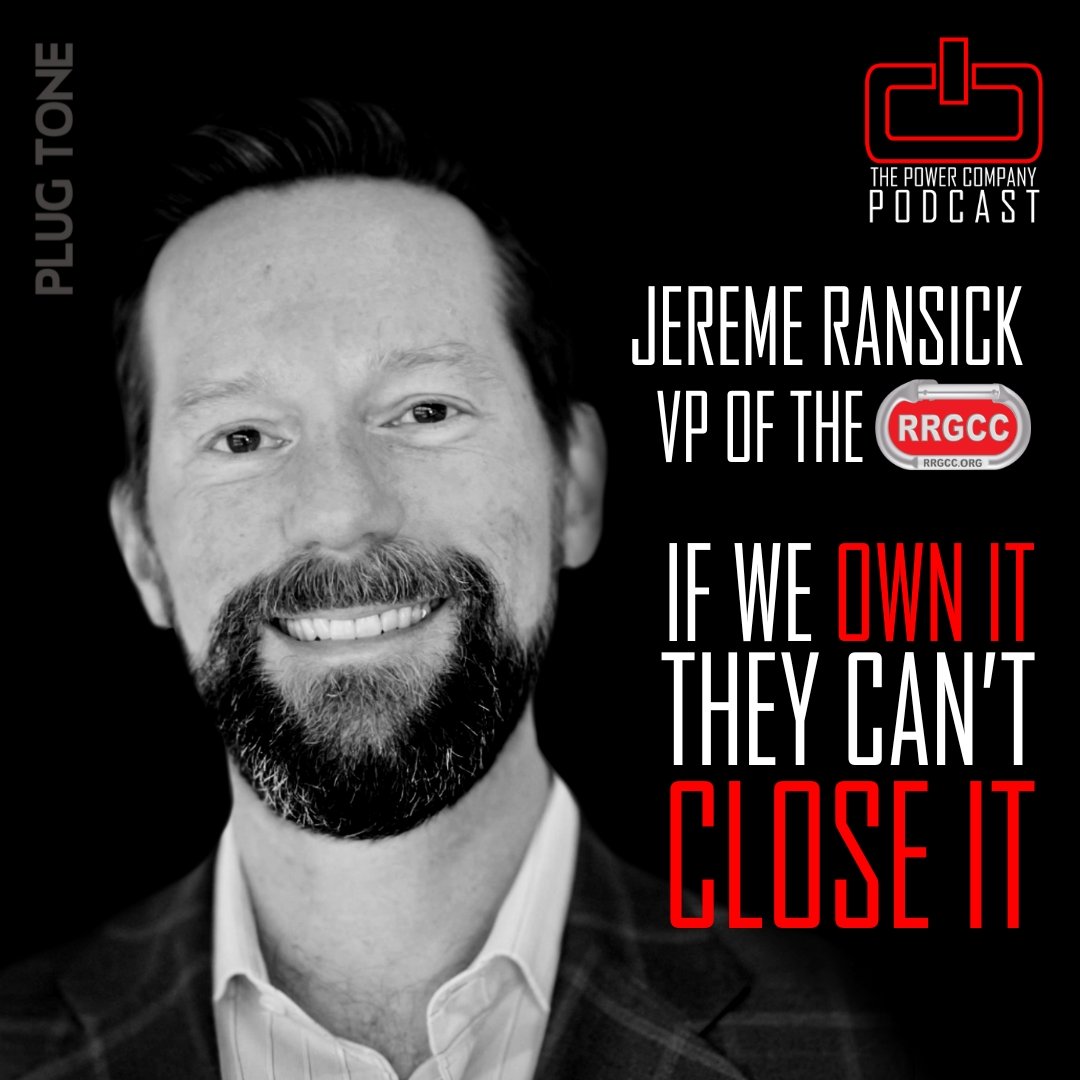





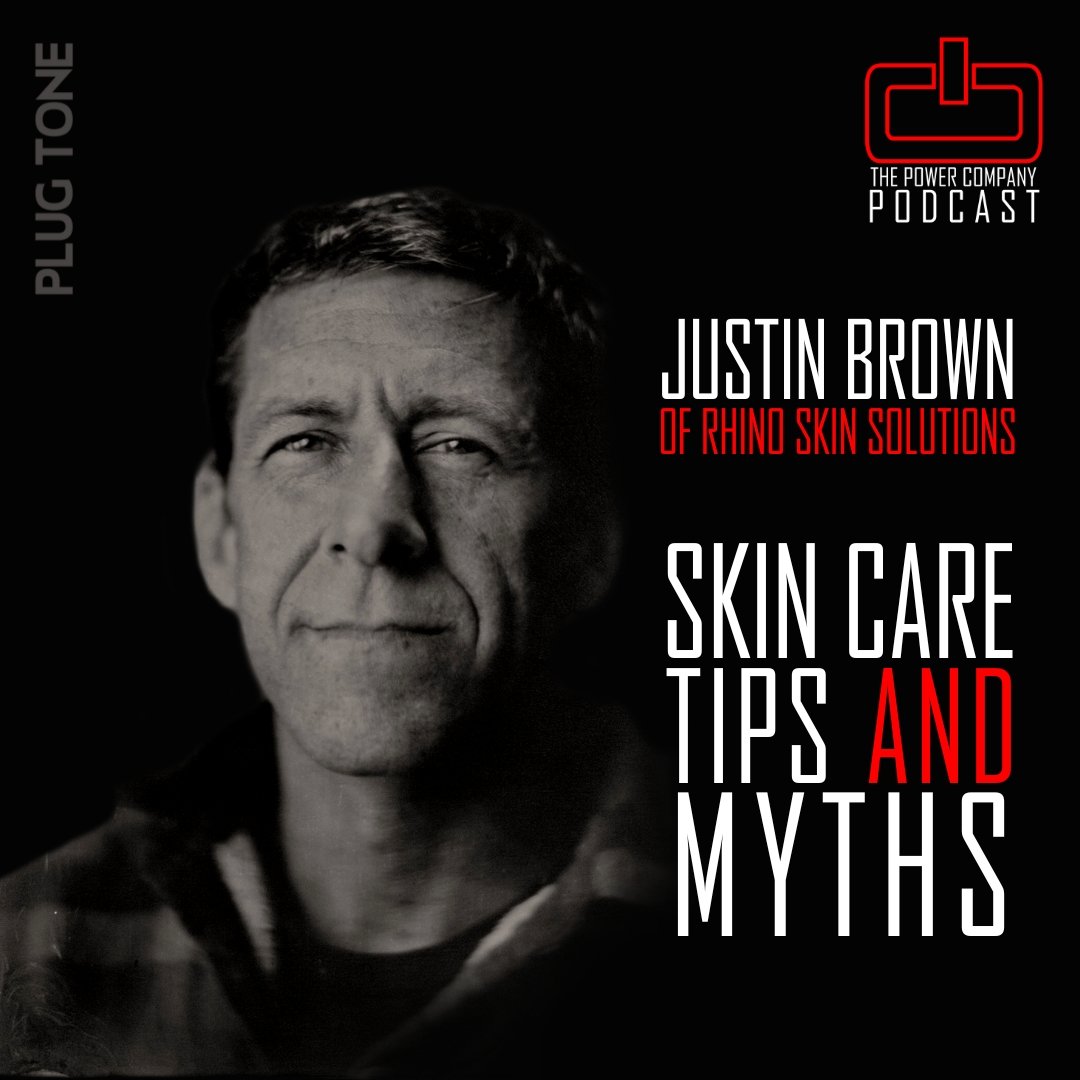
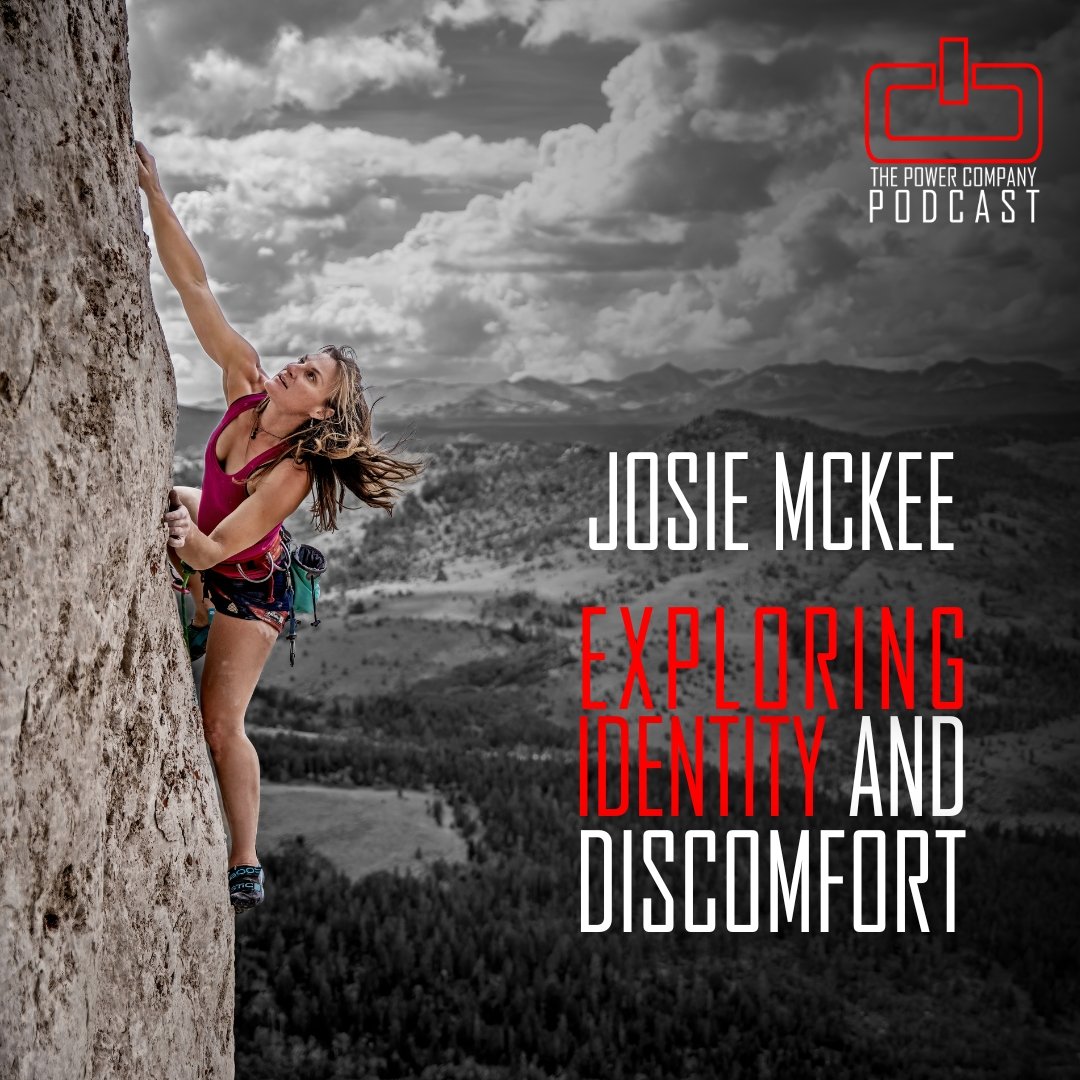


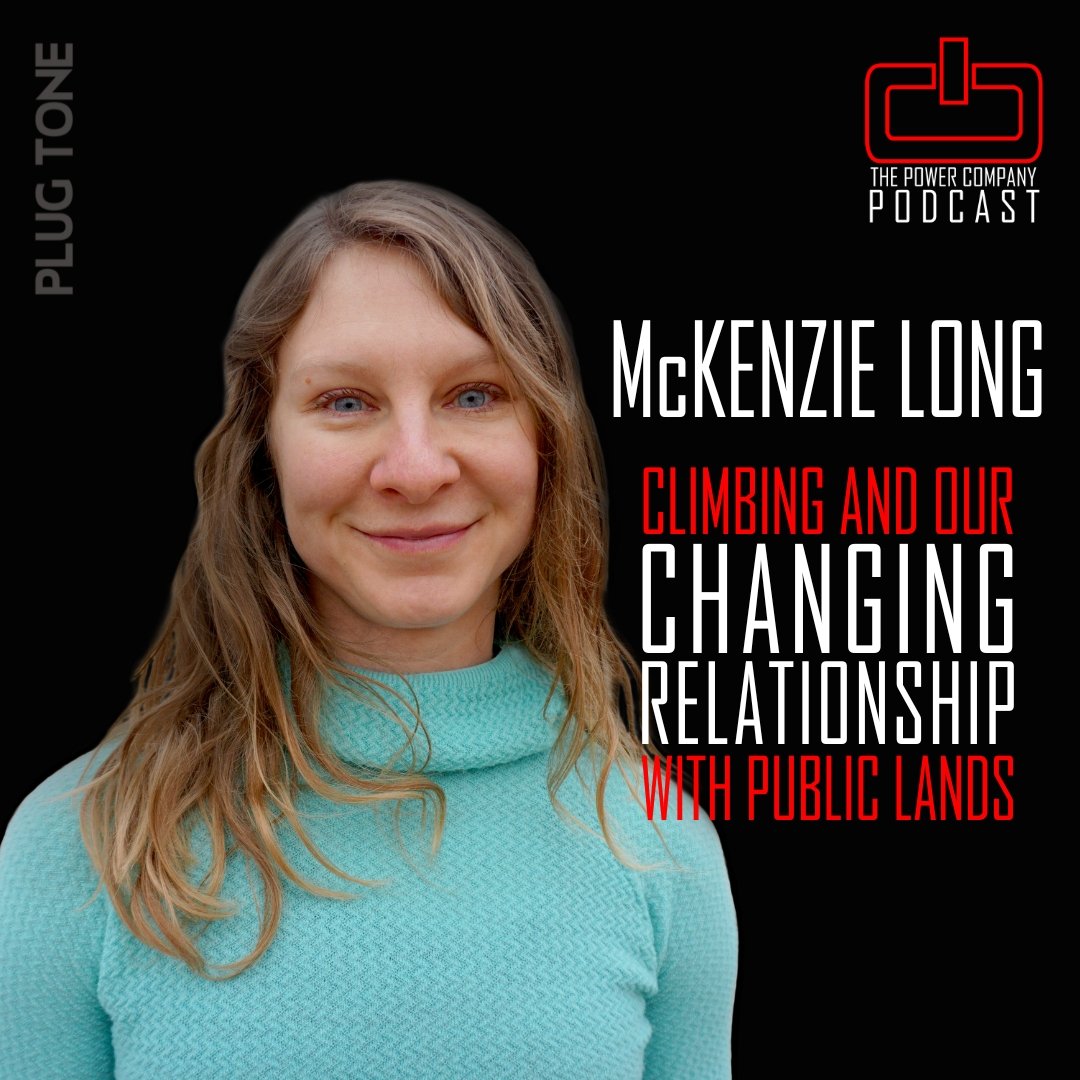
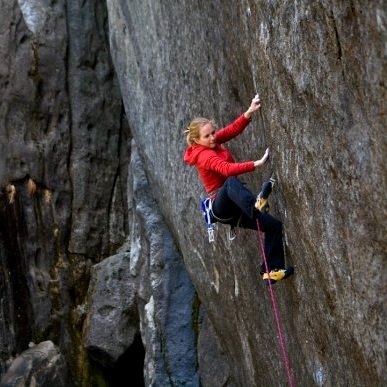
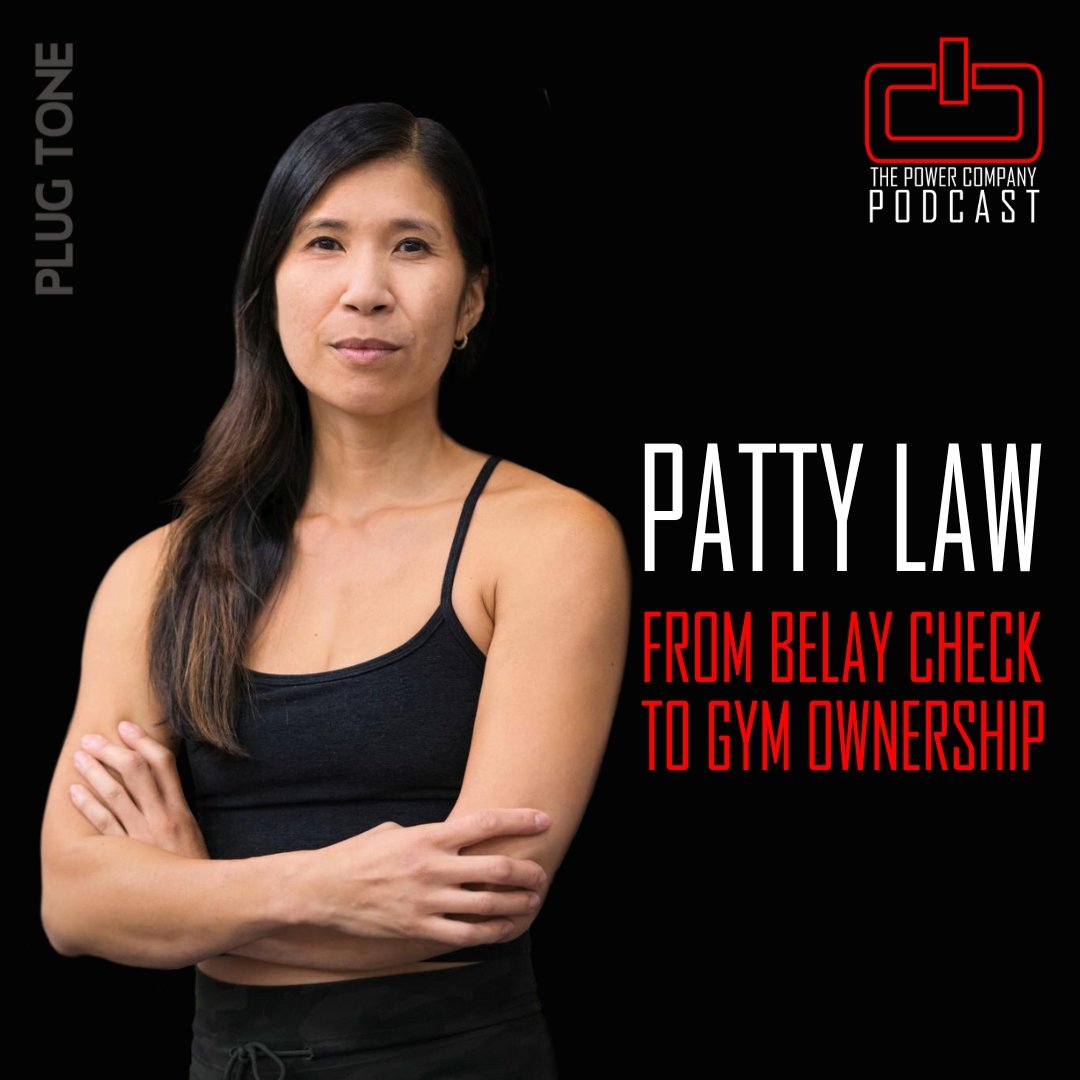


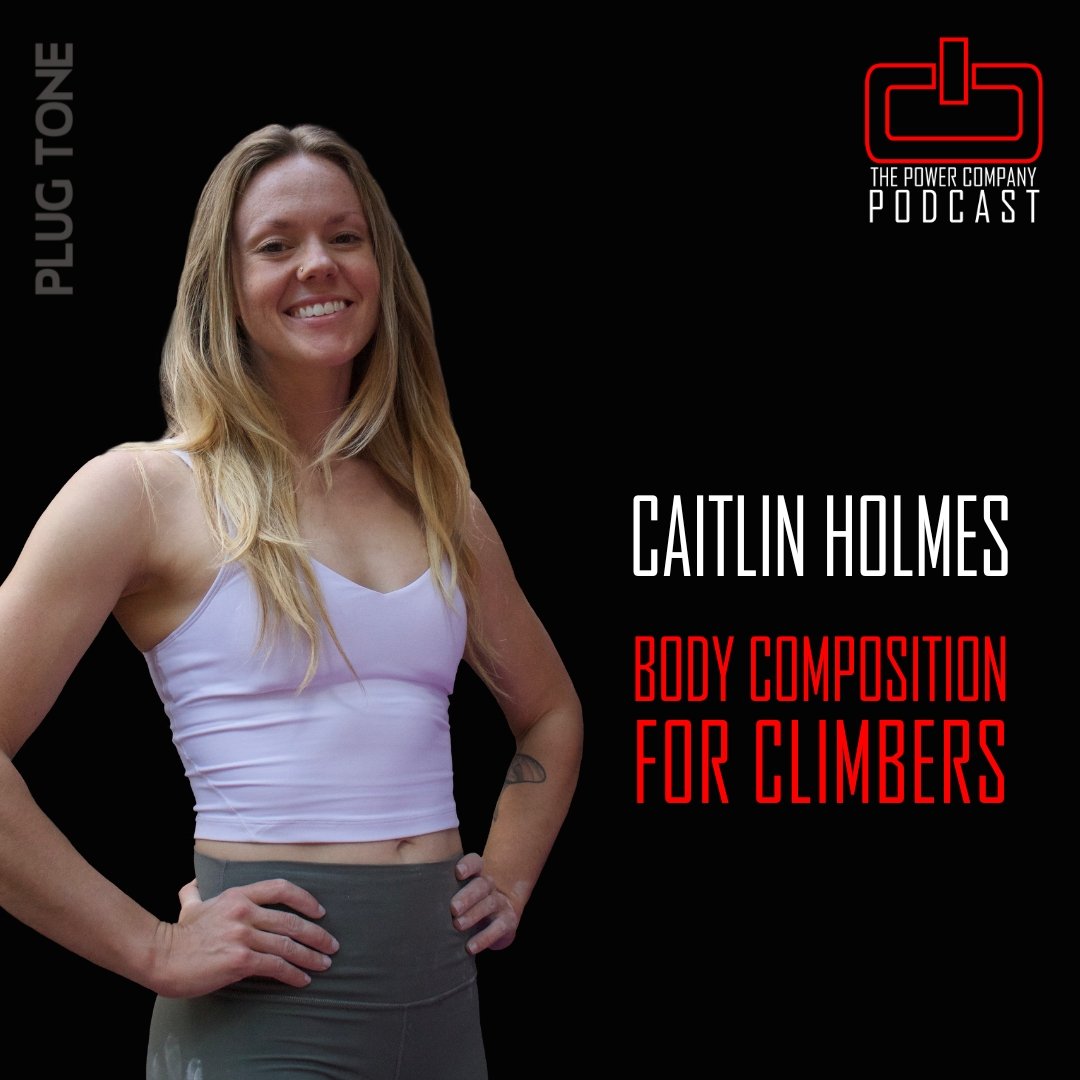
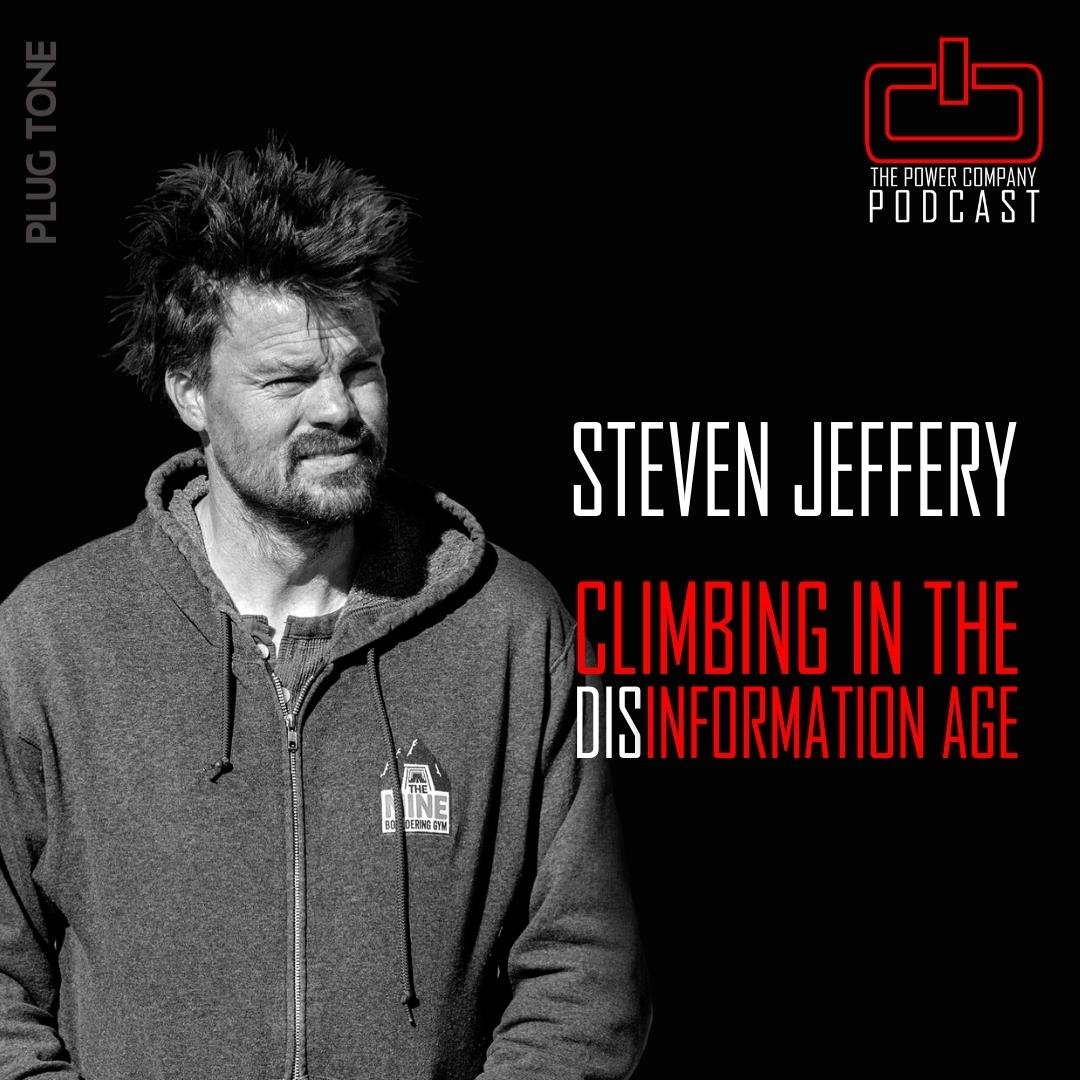







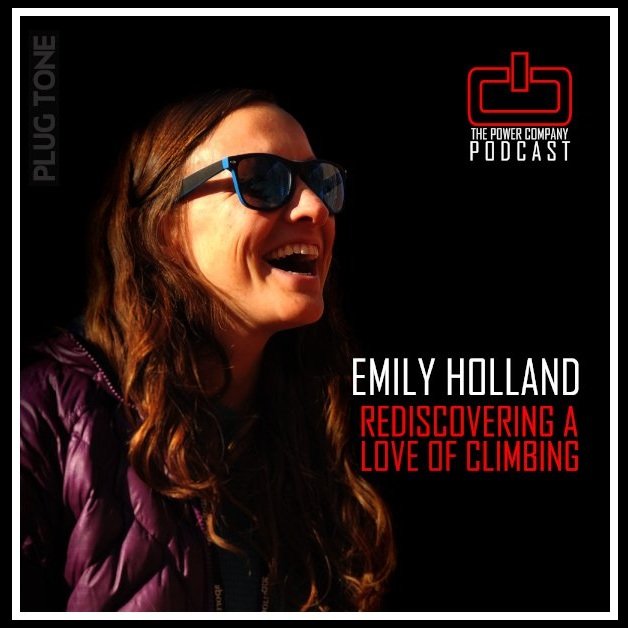




Today, we rewind to an episode with Hazel Findlay in which she shares strategies for getting into the right mindset to send.